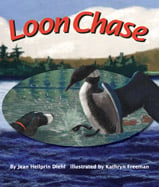Alignment to Standards for MO

| Grade | Number | Standard |
|---|---|---|
| 1 | SC-EC 1A4a. | specific organism may interact with other organisms or with the environment (e.g., pollination, shelter, seed dispersal, camouflage, migration, hibernation, defensive mechanism |
| 1 | SC-EC 1A4b. | Recognize different environments (i.e., pond forest, prairie) support the life of different types of plants and animals |
| 1 | SC-EC 1AKa. | Describe how the seasons affect the behavior of plants and animals.(includes life cycle-related to seasons) |
| 1 | SC-LO 1B2a. | Recognize that animals progress through life cycles of birth, growth, and development, reproduction, and death |
| 1 | SC-LO 1B2b. | Record observations on the life cycle of different animals (e.g., butterfly, dog, frog, chicken, snake) |
| 1 | SC-LO 1D1a. | Identify and compare the physical structures of a variety of plants (e.g., stem, leaves, flowers, seeds, roots |
| 1 | SC-LO 1D1b. | physical structures of a variety of animals (e.g., sensory organs, beaks, appendages, body covering) |
| 1 | SC-LO 1D1d. | Identify the relationships between the physical structures of animals and the function of those structures (e.g., taking in water, support, movement, obtaining food, reproduction |
| 1 | SC-LO 1D5a. | Compare structures (e.g., wings vs. fins vs. legs; gills vs. lungs; feathers vs. hair vs. scales) that serve similar functions for animals belonging to different vertebrate classes |
| 1 | SC-LO 1DKa. | Observe and compare the structures and behaviors of different kinds of plants and animals |
| 1 | SC-LO 1E1a. | Distinguish between plants and animals based on observable structures and behaviors |
| 1 | SC-LO 1E5a. | Explain how similarities are the basis for classification |
| 1 | SC-LO 1E5d. | Classify vertebrate animals into classes (amphibians, birds, reptiles, mammals, fish) based on their characteristics |
| 2 | SC-LO 2C5a. | Recognize the major life processes carried out by the major systems of plants and animals (e.g., support, reproductive, digestive, transport/circulatory, excretory, response) |
| 3 | SC-EC 3C4b. | Identify specialized structures and senses and describe how they help animals survive in their environment (e.g., antennae, body covering, teeth, beaks, whiskers, appendages |
| 3 | SC-EC 3C4c. | internal cues (e.g., hunger) and external cues (e.g., changes in the environment) that cause organisms to behave in certain ways (e.g., hunting, migration, hibernation |
| 3 | SC-EC 3C4d. | Predict which plant or animal will be able to survive in a specific environment based on its special structures or behaviors. |
| 3 | SC-LO 3D2a. | Identify and relate the similarities and differences among animal parents and their offspring |
| 3 | SC-LO 3D3a. | Identify and relate the similarities and differences between plants and their offspring (i.e., seedlings) |
| 3 | SC-LO 3DKa. | Recognize that living things have offspring |
| 3 | SC-LO 3DKb. | Recognize a parent- offspring relationship based on the organisms physical similarities and differences |